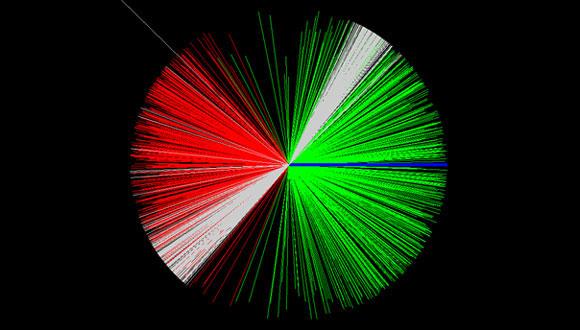Joint Seminar in Nuclear Physics
Or Hen, Tel-Aviv University
Doron Gazit, The Hebrew University
PROGRAM:
14:30 - 14:45 Refreshments
14:45 - 15:45 "Short-range correlations in imbalanced Fermi systems" - Or Hen, Tel-Aviv University
15:45 - 16:15 Coffee break
16:15 - 17:15 "Current status of neutrinoless double beta decay matrix elements" - Doron Gazit, The Hebrew University
Abstract (1st talk)
"Short-range correlations in imbalanced Fermi systems" - Or Hen, Tel-Aviv University
The atomic nucleus is composed of two different kinds of fermions, protons and neutrons. If the protons and neutrons did not interact, the Pauli exclusion principle would force the majority fermions, usually neutrons, to higher average momentum. In this talk I will present results from high-energy electron scattering experiments, which show that short-range interactions between the fermions form correlated, high-momentum, neutron-proton pairs. Thus, in neutron-rich nuclei the probability of finding a high-momentum (k>kFermi) proton (a minority Fermion) is greater than that of a neutron (a majority Fermion). This has wide ranging implications for atomic, nuclear and astro physics, including neutrino-nucleus scattering, the EMC effect, the NuTeV anomaly, the nuclear symmetry energy and more. This feature is universal for imbalanced interacting Fermi systems and can also be observed experimentally in two-spin states ultra-cold atomic gas systems.
[1] [1] O. Hen et al., Science 346, 614 (2014).
[2] I. Korover, N. Muangma, and O. Hen et al., Phys. Rev. Lett. 113, 022501 (2014).
[3] O. Hen, L. B. Weinstein, E. Piasetzky, G. A. Miller, M. M. Sargsian, and Y. Sagi, arXiv: 1407.8175 (2014).
[4] O. Hen, Bao-An Li, Wen-Jun Guo, L.B. Weinstein, and Eli Piasetzky, Phys. Rev. C 91, 025803 (2015).
Abstract (2nd talk)
"Current status of neutrinoless double beta decay matrix elements" - Doron Gazit, The Hebrew University
Neutrinoless double beta decay is a very sensitive test for lepton number violation. In models which include small deviations from the Standard model, this decay is related to the character of the neutrino as a Majorana fermion, and to its mass. In all models, the strength of the decay is proportional to the nuclear matrix element. The calculation of these matrix elements is the main uncertainty source in the experiments and their analysis.
Moreover, for such a rare decay, understanding the sensitivity of the measurement is very important in order to state the effectiveness of this experiment, with respect to other methods, such as the cosmological constraints on the number of neutrino species and their masses. In this talk I will give an overview on the status of the calculations and possible new directions towards better control on the many body calculations and their predictions.
Seminar Organizers: Ami Leviatan, Eli Piasetzky and Itzhak Tserruya


